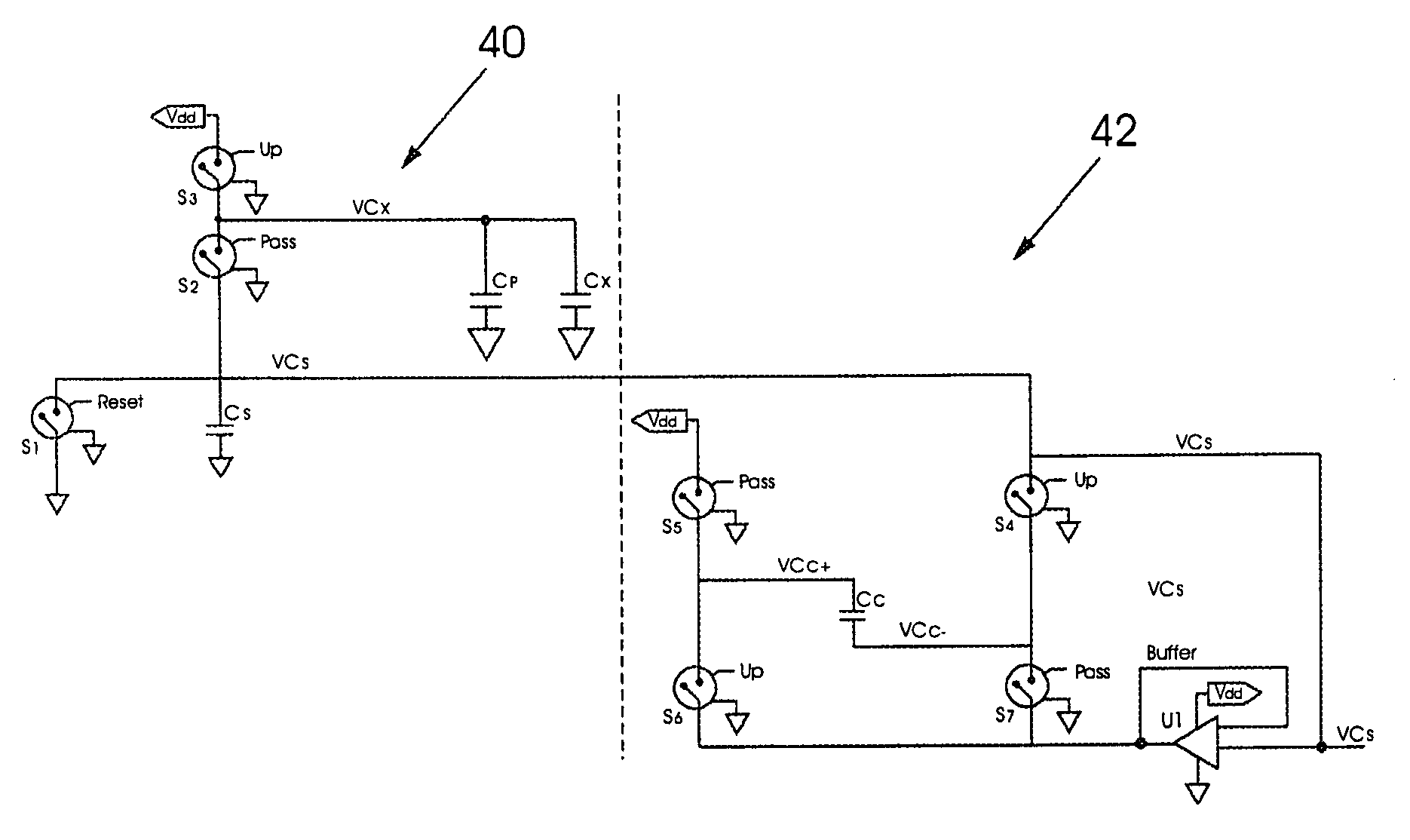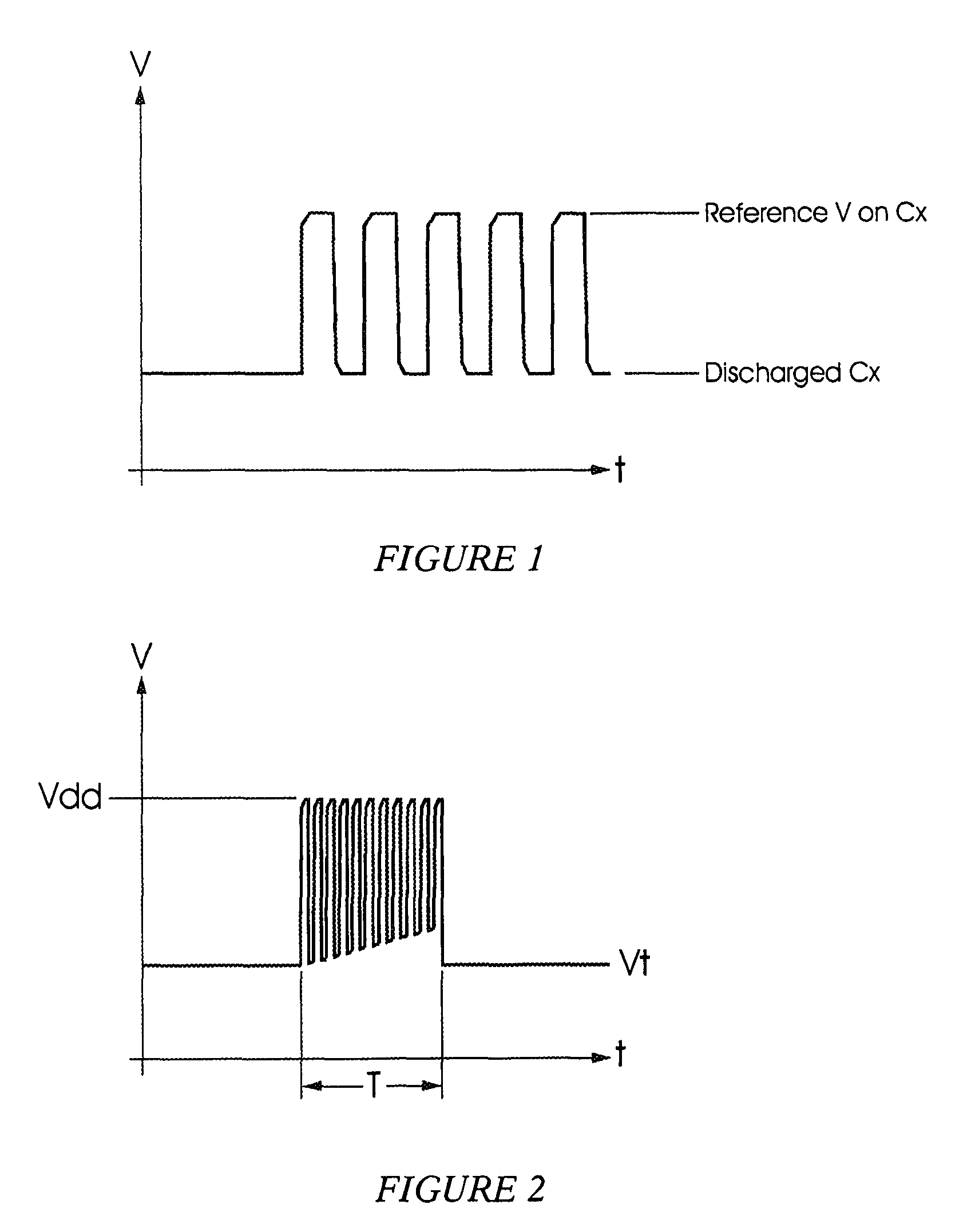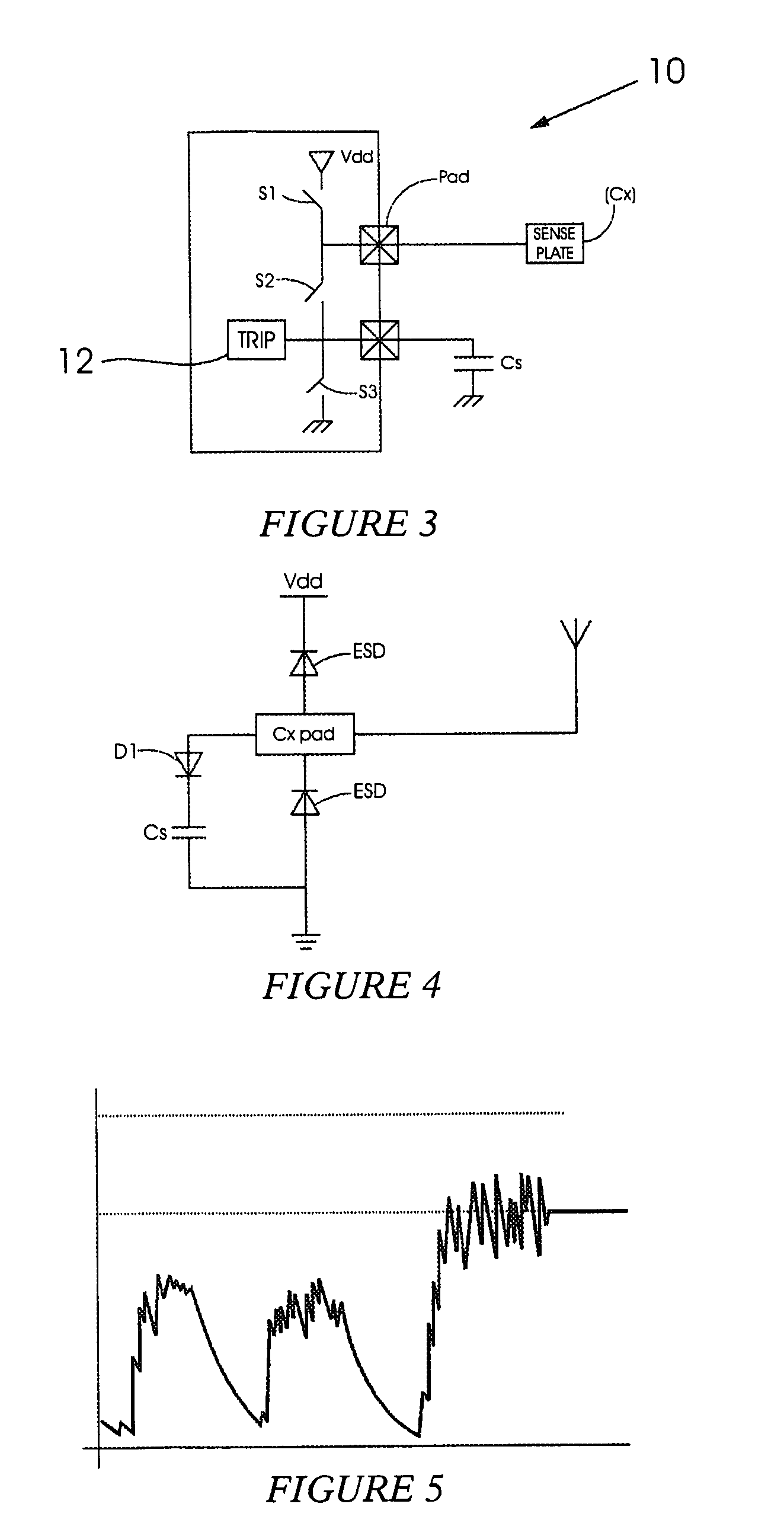Noise rejection and parasitic capacitance removal implementations
a capacitance removal and capacitance rejection technology, applied in the direction of pulse technique, instrumentation, program control, etc., can solve the problems of difficult combat, easy adverse effects of noise in the capacitive sensing circuit used to detect touch or proximity events, and noise generated by appliances such as electric drills and mobile phones, so as to reduce noise coupling
- Summary
- Abstract
- Description
- Claims
- Application Information
AI Technical Summary
Benefits of technology
Problems solved by technology
Method used
Image
Examples
Embodiment Construction
[0035]In a capacitive sensing circuit a sense plate or element, designated in this specification by the reference Cx, is charged to a working voltage. A touch or proximity event is reflected by a change in capacitive coupling to the sense plate and a resulting change (delta) in the charge on the sense plate that can be detected when the sense plate is discharged into a reference capacitor.
[0036]In general terms use is made of a charge transfer principle to measure the capacitive coupling of the sense plate to the environment. When an object approaches the sense plate the capacitive coupling to the environment changes, typically increasing the capacitance of the plate, and this change is detected by the circuit which then interprets the change as a proximity or touch event.
[0037]FIG. 1 of the accompanying drawings illustrates initial waveforms on a sense plate Cx as the sense plate is charged from a discharged state to a voltage level which is stable over time, particularly on a shor...
PUM
 Login to View More
Login to View More Abstract
Description
Claims
Application Information
 Login to View More
Login to View More - R&D
- Intellectual Property
- Life Sciences
- Materials
- Tech Scout
- Unparalleled Data Quality
- Higher Quality Content
- 60% Fewer Hallucinations
Browse by: Latest US Patents, China's latest patents, Technical Efficacy Thesaurus, Application Domain, Technology Topic, Popular Technical Reports.
© 2025 PatSnap. All rights reserved.Legal|Privacy policy|Modern Slavery Act Transparency Statement|Sitemap|About US| Contact US: help@patsnap.com



